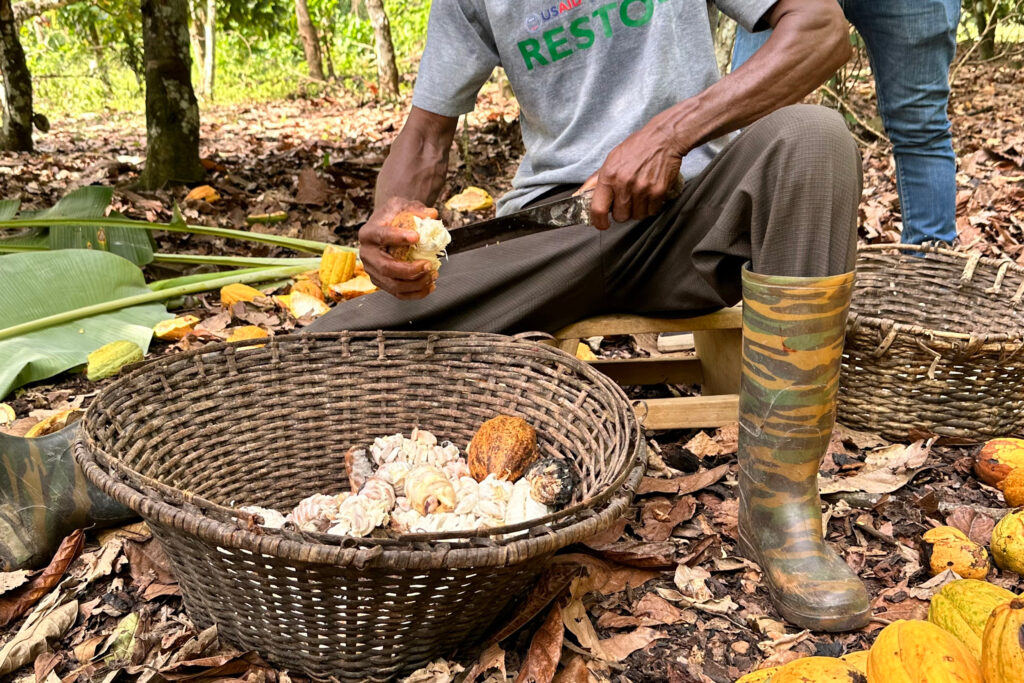Extreme weather has stoked food prices around the world in recent years and could lead to more political instability and inflation, with the world’s poor bearing most of the economic pain and health impacts, according to new research.
A report published Monday in the journal Environmental Research Letters tracks 16 weather events, many directly attributed to climate change, including extreme heat and flooding, and connects those to specific price surges.
“We can see that there’s a broad global context for this happening in recent years that extends all the way from East Asia through Europe and also to North America,” said Maximillian Kotz, a post-doctoral fellow at the Barcelona Supercomputing Center and the lead author of the study. “We think our paper is really a call to action for us to consider these wider effects of food price increases in response to climate change for our societies.”
In California and Arizona, extreme heat and dry soil conditions in the summer of 2022 drove an 80 percent increase in vegetable prices that November. In Spain and Italy, a drought spanning 2022 and 2023 led to a 50 percent spike in olive oil prices by 2024.
Chocolate lovers have had to shell out more cash after cocoa prices jumped nearly 300 percent following a 2024 heatwave in Ivory Coast and Ghana, which produce 60 percent of the world’s cocoa. Coffee drinkers were similarly hit after a 2023 drought in Brazil led to a 55 percent jump in arabica bean prices, and a 2024 heat wave in Asia doubled prices of robusta coffee.
Kotz explained that the research builds on a previous study, done in connection with the European Central Bank and published in 2024, that analyzed how overall consumer prices responded to climatic conditions.
“What we found is very strong evidence that abnormally high temperatures drive increases in the price of food and overall inflation,” he said, “and that therefore, under future climate change with heat intensifying, we’re going to be expecting to see more and more of these kinds of increases in consumer price indexes, broadly.”
For the current study, Kotz and his colleagues compared historical weather conditions and identified “anything out of the bounds of what we’ve seen before.” They then tracked those out-of-bounds weather events, occurring from 2022 to 2024, to see the impact on food prices.
The researchers say weather-related food price spikes could lead to a cascading series of social consequences—nutritonal, economic and political—as people increasingly struggle to pay for food.
As central banks, including the Federal Reserve, try to control inflation, food prices could “challenge their ability to fulfill their targets for monetary stability,” Kotz said, noting how food prices played a role in last year’s presidential election.
Raj Patel, a researcher at the University of Texas at Austin and a member of the International Panel of Experts on Sustainable Food Systems, said the study’s main warning—that climate change will lead to further price spikes—suggests that “dire social consequences are going to emerge” in the future.
Historical analyses have shown that the 2010 wildfires in Russia forced the price of wheat to skyrocket, directly leading to the Arab Spring uprisings, a series of anti-government protests and violence across much of the Arab world.
Patel, who was not involved in the new study, also noted that Russia was undergoing austerity measures when the wildfires were sweeping across its wheat belt, meaning there was less money available to fight the fires. The country then imposed an embargo on wheat exports, sending the global price of wheat “sky high,” Patel said.
“In Mozambique, for instance … we saw bread riots and we saw people taking to the streets because the price of wheat had risen so high that they couldn’t afford daily bread,” Patel explained in a call with reporters. “But Mozambique itself had undergone austerity, and there wasn’t any money for policing to buy rubber bullets, so the police opened fire with live ammunition. … Now this is how a heat spike in Russia can cause deaths by live ammunition in Mozambique.”
Food price spikes have obvious impacts on overall food consumption but can also shift the choices people make. Research by the London-based Food Foundation found that food-insecure households in the United Kingdom cut back on fruit and vegetable consumption when prices go up.
That’s a “really big pattern by socioeconomic status, this really strong gradient where the lowest-income households eat the least and the highest-income households eat the most,” said Anna Taylor, the executive director of the foundation and a co-author of the new paper. “That really, really matters for health because fruits and vegetables … are massively important for immunity, but also long-term protections from a whole range of chronic conditions.”
Currently, about 14 percent of U.K. households are food insecure. The most recent estimation for the United States, from 2023, is about 13.5 percent. Recent cuts to the Supplemental Nutrition Assistance Program, the U.S.’s primary food assistance effort, will increase the numbers, though many of the reductions won’t take effect for three years.
“That’s from 2023, so the number is surely higher now,” Patel said. “Globally, of course, if you look at who is it that’s going to be worst affected, it is people with the least income and the least power. It’s going to be women and children who are most directly going to experience changes in the affordability of diets.”
Patel referred to the already high number of people considered food insecure, which is estimated to be about 733 million—or about one in 11 globally.
“Obviously, that figure is going to go up as a direct result of climate change,” he said.
About This Story
Perhaps you noticed: This story, like all the news we publish, is free to read. That’s because Inside Climate News is a 501c3 nonprofit organization. We do not charge a subscription fee, lock our news behind a paywall, or clutter our website with ads. We make our news on climate and the environment freely available to you and anyone who wants it.
That’s not all. We also share our news for free with scores of other media organizations around the country. Many of them can’t afford to do environmental journalism of their own. We’ve built bureaus from coast to coast to report local stories, collaborate with local newsrooms and co-publish articles so that this vital work is shared as widely as possible.
Two of us launched ICN in 2007. Six years later we earned a Pulitzer Prize for National Reporting, and now we run the oldest and largest dedicated climate newsroom in the nation. We tell the story in all its complexity. We hold polluters accountable. We expose environmental injustice. We debunk misinformation. We scrutinize solutions and inspire action.
Donations from readers like you fund every aspect of what we do. If you don’t already, will you support our ongoing work, our reporting on the biggest crisis facing our planet, and help us reach even more readers in more places?
Please take a moment to make a tax-deductible donation. Every one of them makes a difference.
Thank you,

